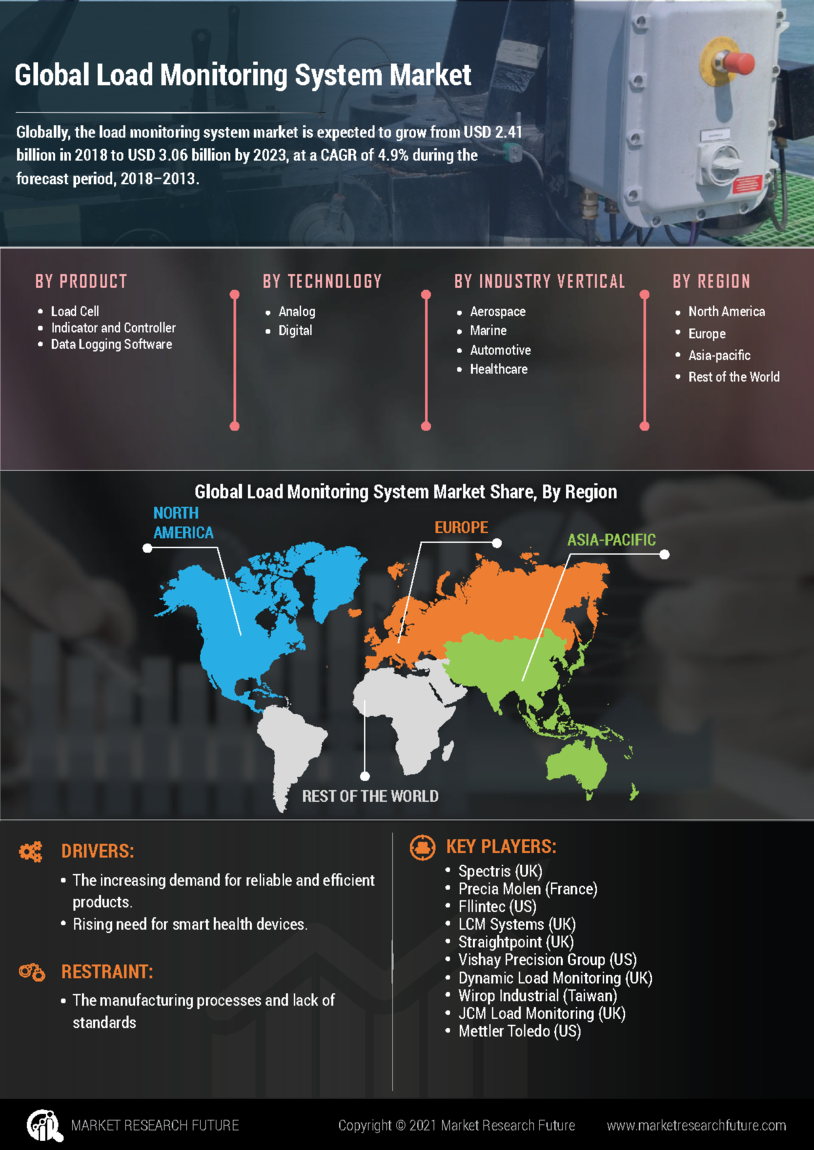The Load Monitoring System Market is characterized by dynamic competition and rapid technological advancements. Companies operating in this sector are increasingly focusing on innovation, product reliability, and integration capabilities, as these are key drivers influencing market growth. Various factors, including the rising demand for automation in industries, the increasing emphasis on safety and efficiency, and the need for real-time monitoring solutions, contribute significantly to the competitive landscape.
Players in this market range from long-established firms with comprehensive service offerings to emerging startups that emphasize cutting-edge technologies. The ongoing push toward sustainable practices and energy efficiency is prompting businesses to invest in load monitoring systems, thereby redefining competitive strategies and positioning within the market.
Ametek holds a formidable position in the Load Monitoring System Market, known for its robust and reliable product offerings. The company boasts a strong market presence due to its extensive expertise and a significant portfolio that includes a range of solutions tailored for load monitoring applications. Ametek’s strengths lie in its commitment to quality, innovation, and customer satisfaction, which resonate well with industrial clients seeking dependable monitoring solutions.
The brand's focus on integrating advanced technology into its products aligns with market trends toward automated solutions. Additionally, Ametek's well-established distribution channels and global reach enhance its capability to serve diverse geographical markets efficiently. With a strong emphasis on research and development, Ametek continuously seeks to improve its product line, ensuring that it remains at the forefront of the load monitoring sector.
Siemens is another key player in the Load Monitoring System Market, recognized for its global footprint and technological prowess. The company effectively leverages its extensive portfolio to provide tailored solutions across various sectors, showcasing its ability to adapt to different industrial needs. Siemens stands out for its emphasis on integrating IoT technology into load monitoring systems, which enhances data analytics and operational efficiency for its clients.
The company’s strength lies in its deep-rooted commitment to innovation and sustainability, positioning itself as a leader in developing smart and efficient solutions. Furthermore, Siemens benefits from a strong brand reputation and an extensive network of partnerships, enabling it to offer a seamless customer experience and high-quality service. This strategic alignment with industry trends such as automation and digital transformation continually reinforces Siemens’ competitive edge in the load monitoring market.

















Leave a Comment